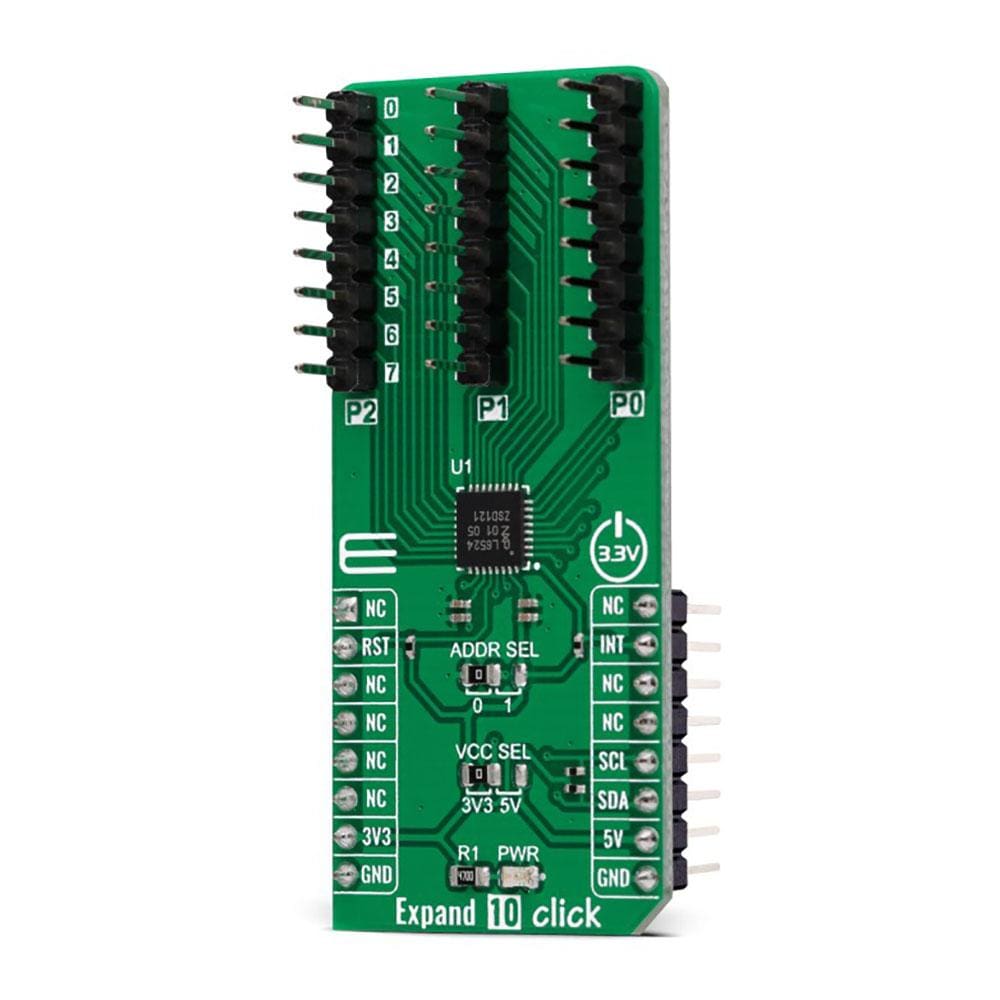
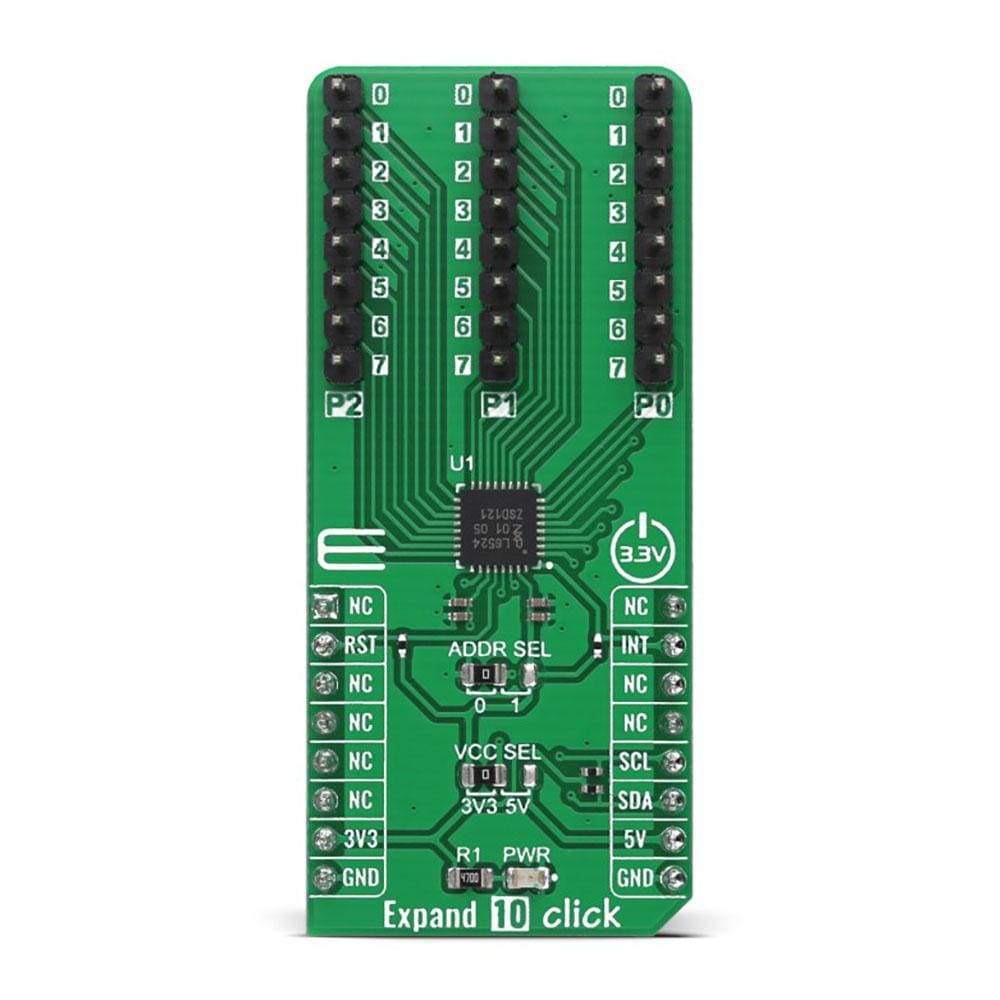
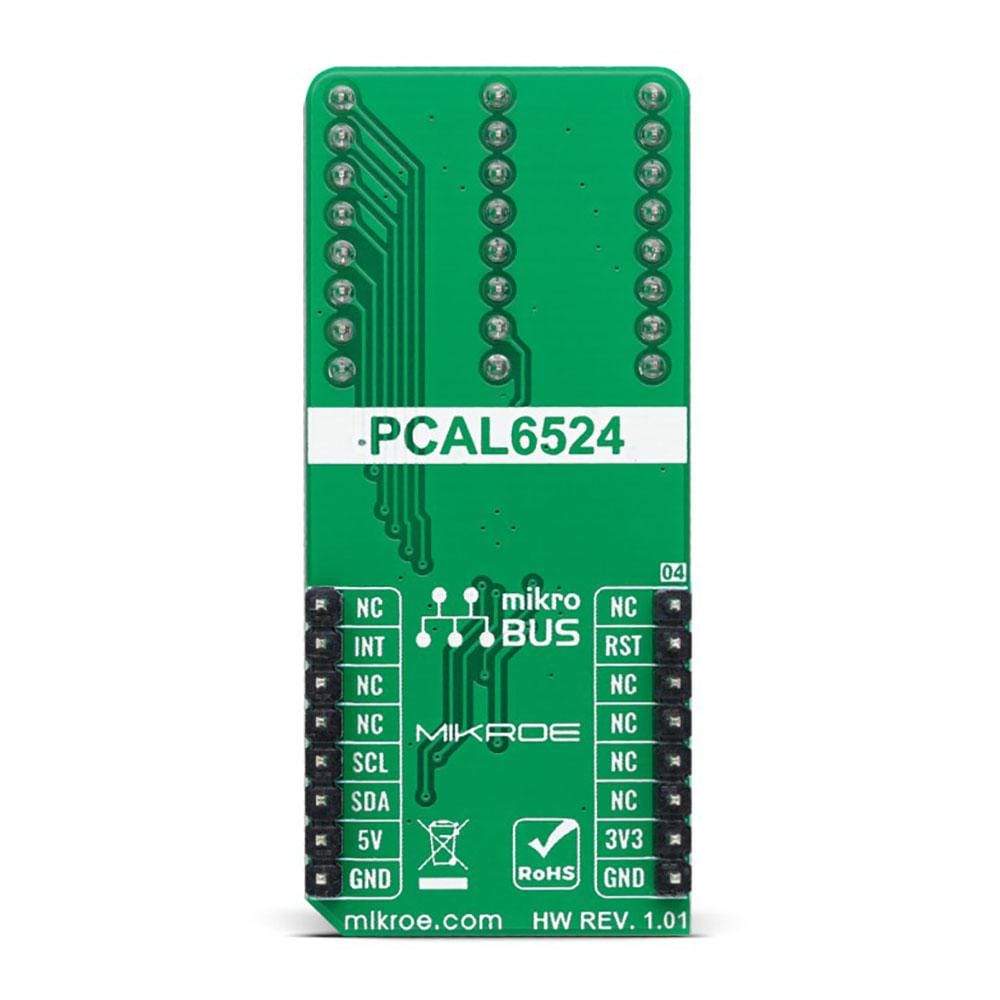
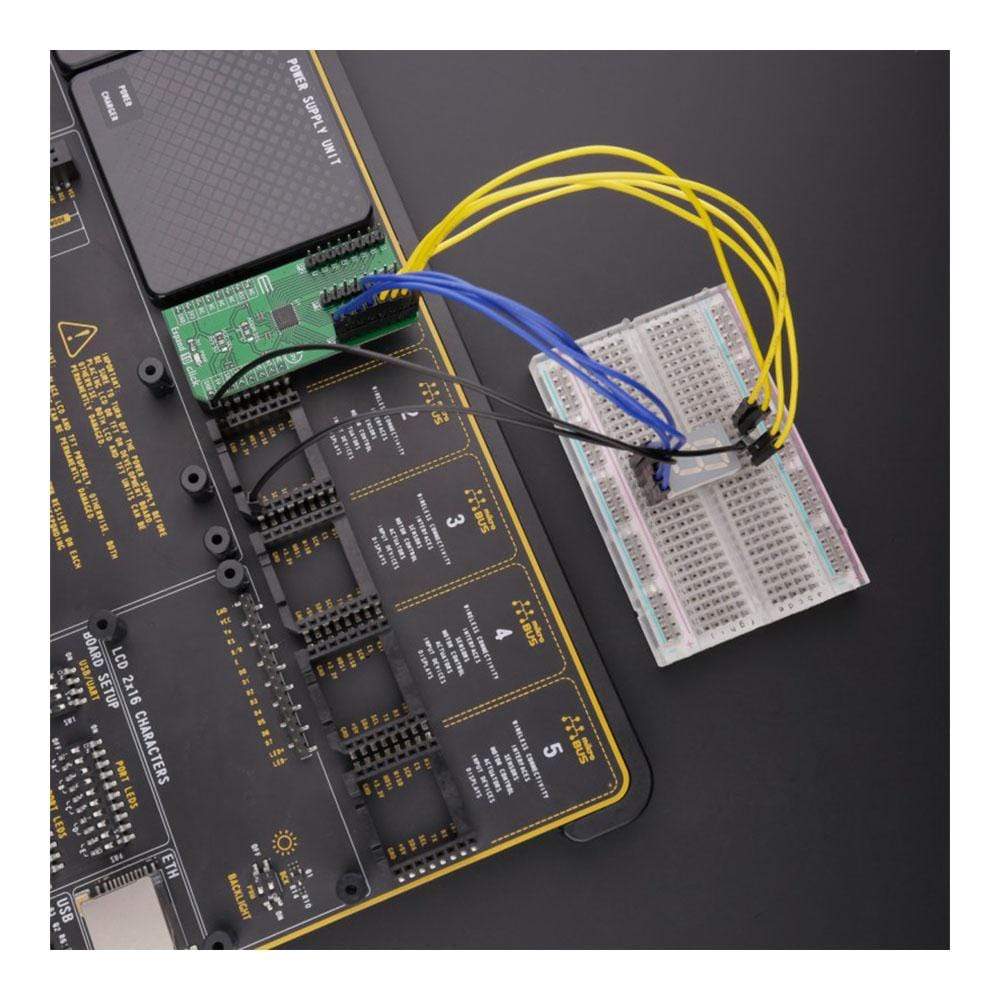
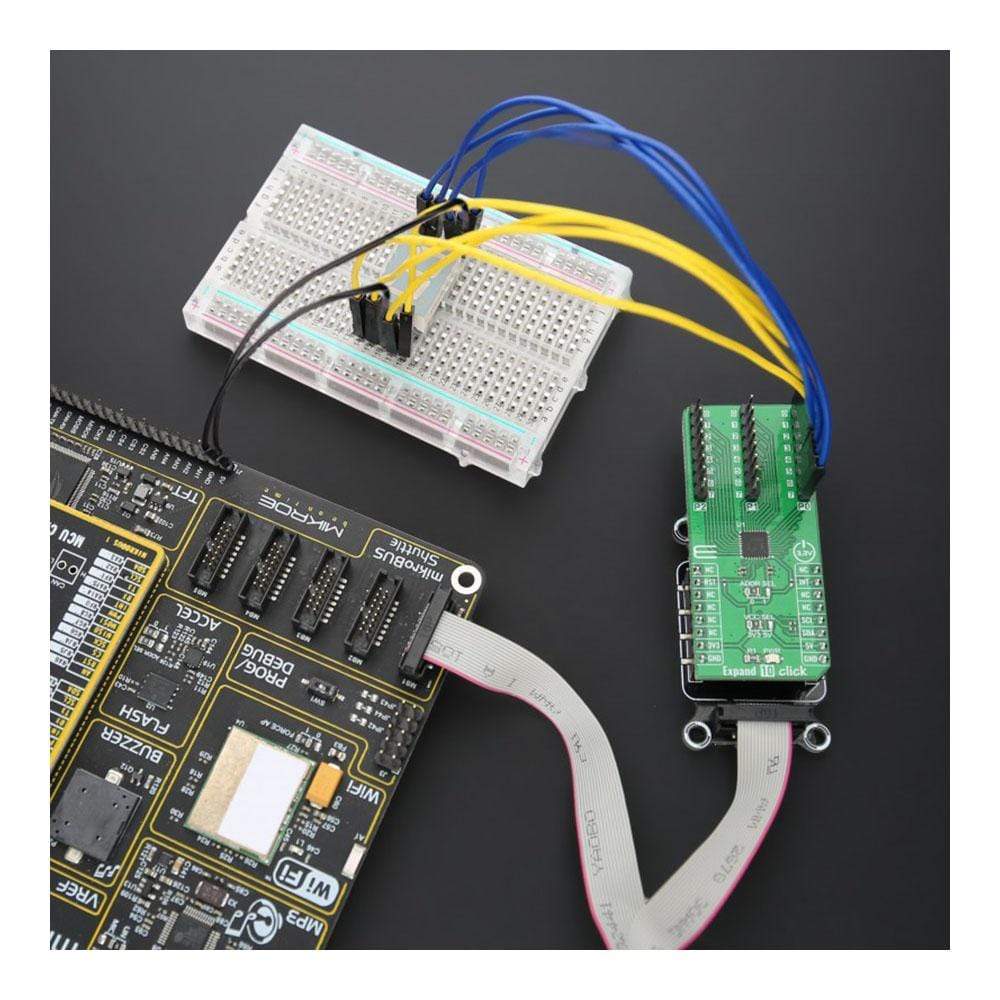
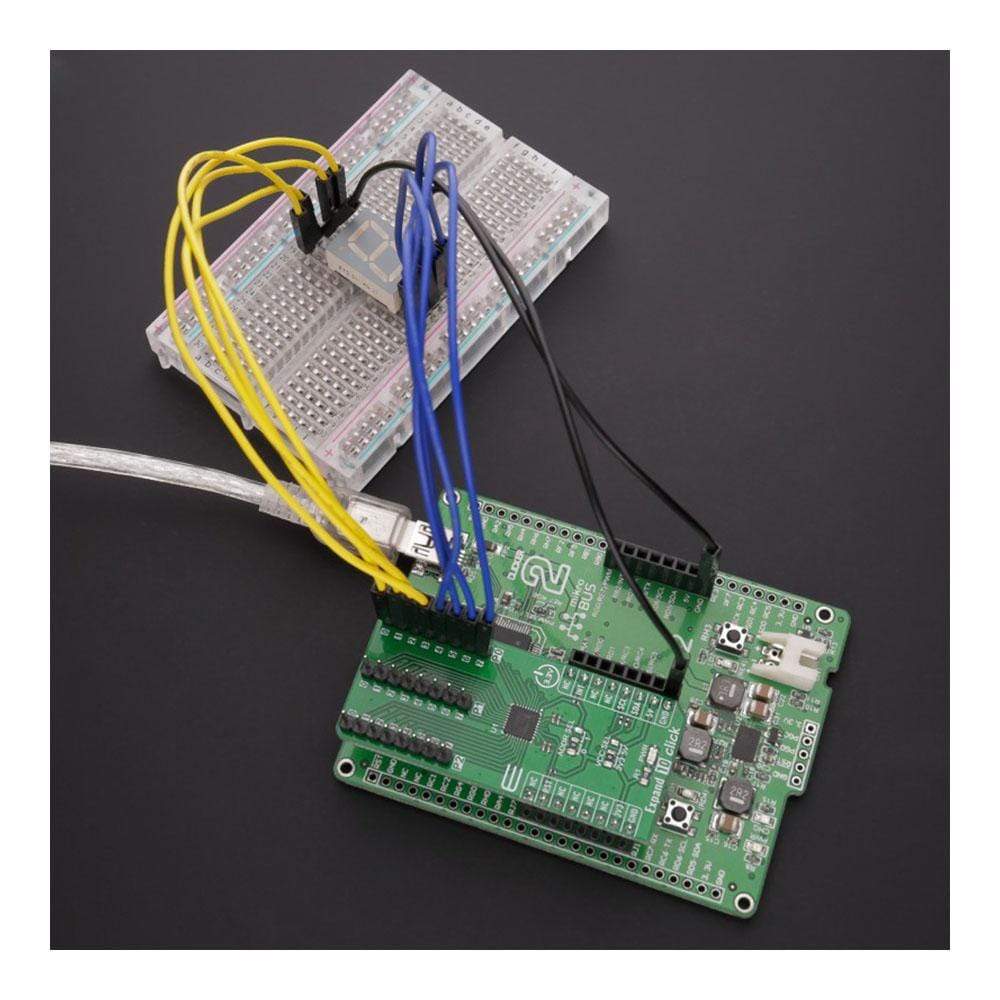
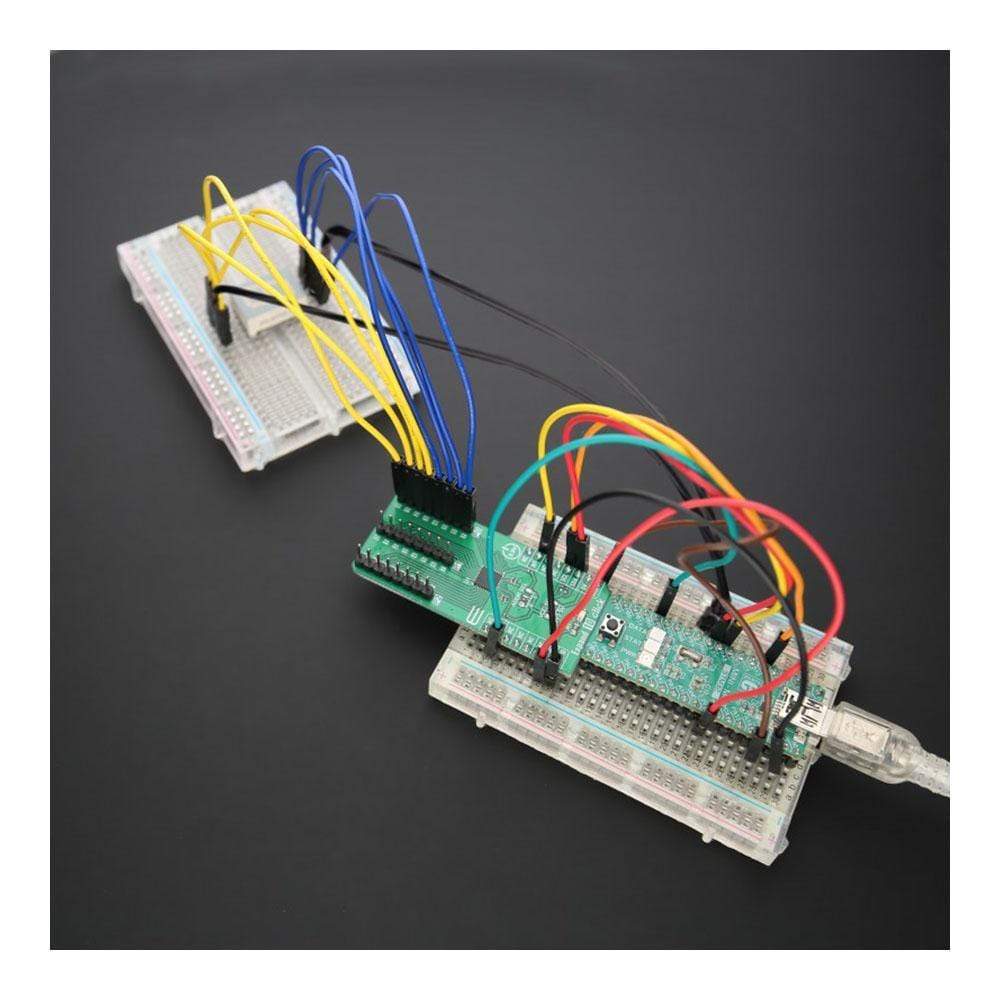
Key Features
Overview
The Expand 10 Click Board™ is a compact add-on board that contains a multi-port I/O expander. The board features the PCAL6524, a 24-bit general-purpose I/O expander providing remote I/O expansion for most MCU’s families via the Fast-mode Plus I2C-serial interface from NXP Semiconductors. The PCAL6524 has a built-in level shifting feature that makes it highly flexible in power supply systems where communication between incompatible I/O voltages is required. It allows seamless communications with next-generation low voltage microprocessors and microcontrollers on the interface and peripherals at a higher voltage on the port side. This Click Board™ provides a simple solution when additional I/Os are needed while keeping interconnections to a minimum in system monitoring applications, industrial controllers, portable equipment, and many more.
The Expand 10 Click Board™ is supported by a mikroSDK compliant library, which includes functions that simplify software development. This Click Board™ comes as a fully tested product, ready to be used on a system equipped with the mikroBUS™ socket.
Downloads
Der Expand 10 Click Board™ ist eine kompakte Zusatzplatine, die einen E/A-Expander mit mehreren Anschlüssen enthält. Die Platine verfügt über den PCAL6524, einen 24-Bit-Universal-E/A-Expander, der eine Remote-E/A-Erweiterung für die meisten MCU-Familien über die Fast-Mode Plus I2C-Seriell-Schnittstelle von NXP Semiconductors bietet. Der PCAL6524 verfügt über eine integrierte Pegelverschiebungsfunktion, die ihn in Stromversorgungssystemen, in denen eine Kommunikation zwischen inkompatiblen E/A-Spannungen erforderlich ist, sehr flexibel macht. Er ermöglicht eine nahtlose Kommunikation mit Niederspannungs-Mikroprozessoren und Mikrocontrollern der nächsten Generation an der Schnittstelle und Peripheriegeräten mit höherer Spannung auf der Anschlussseite. Dieses Click Board™ bietet eine einfache Lösung, wenn zusätzliche E/As benötigt werden, während die Verbindungen in Systemüberwachungsanwendungen, Industriesteuerungen, tragbaren Geräten und vielem mehr auf ein Minimum beschränkt bleiben.
Das Expand 10 Click Board™ wird durch eine mikroSDK-kompatible Bibliothek unterstützt, die Funktionen enthält, die die Softwareentwicklung vereinfachen. Dieses Click Board™ wird als vollständig getestetes Produkt geliefert und ist bereit für den Einsatz auf einem System, das mit der mikroBUS™-Buchse ausgestattet ist.
| General Information | |
|---|---|
Part Number (SKU) |
MIKROE-4801
|
Manufacturer |
|
| Physical and Mechanical | |
Weight |
0.02 kg
|
| Other | |
Country of Origin |
|
HS Code Customs Tariff code
|
|
EAN |
8606027383786
|
Warranty |
|
Frequently Asked Questions
Have a Question?
Be the first to ask a question about this.







